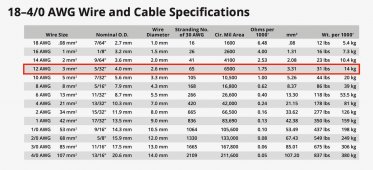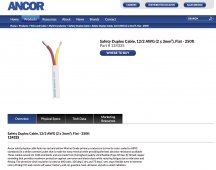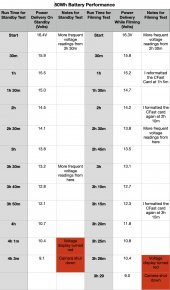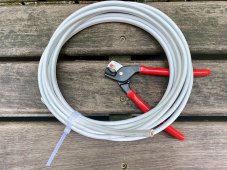reg
Winter: New York City Summer: Atlantic Canada
- Joined
- Mar 24, 2021
- Messages
- 336
I would not be surprised if Jackery power supplies are also floating systems...
I think that it's helpful to keep this thread focused on the nuts and bolts of putting this portable power supply together. That's why I made "Grounding Basics" Not Basic Enough for Me a separate thread. If anyone wants to get into a detailed discussion about portable power supplies and grounding, that thread is a great place to do it. Here, I just want to draw attention to a new post in the thread that I think is worth mentioning.
The post notes that Pecron is releasing a new 1500Wh portable power supply that is clearly floating system. Pecron's promotional material includes a link to the first video below. The video says that the AC outlets are not grounded, but can be if the power supply is connected to a grounding rod. The power supply has a port specifically for this purpose.
Pecron's other portable power supplies don't have this feature. Nor do Jackery power supplies. I've read the user manuals for two of Pecron's current products and all of Jackery's, including the manuals for the new Jackery Explorer 1500 and Explorer 2000. The user manuals don't even mention grounding.
In the absence of information from the makers of portable power supplies, it's impossible to say anything definitive about these power supplies and grounding. However, none of the participants in the above thread have identified a mechanism that explains how, if at all, current portable power supplies address grounding. One participant has flagged inclusion of an isolation transformer as a possibility. In the thread, both he and I have noted that such transformers are neither small nor light. It isn't obvious how the inclusion of an isolation transformer is consistent with the size and weight of Jackery power supplies, especially the smaller ones.
It will be interesting to see what Pecron says in the new power supply's user manual, which doesn't appear to have been released yet, about the grounding port. In any event, I think that it is unlikely, as a practical matter, that most owners of the new Pecron will use it only with a grounding rod or other grounding mechanism. In the second video below, the presenter muses about grounding the supply with a 6' (2m) copper rod. Right.
@Will Prowse might find that the subject of portable power supplies and grounding is a good candidate for one of his videos.
This is the video that Pecron links in its promotional material. The video talks about grounding at 02:44:
The YouTube channel HoboTech reviews portable power supplies regularly. At 02:55 of this video, the presenter says that the new Pecron is the first portable power supply that he's seen with a grounding port:
Last edited:









